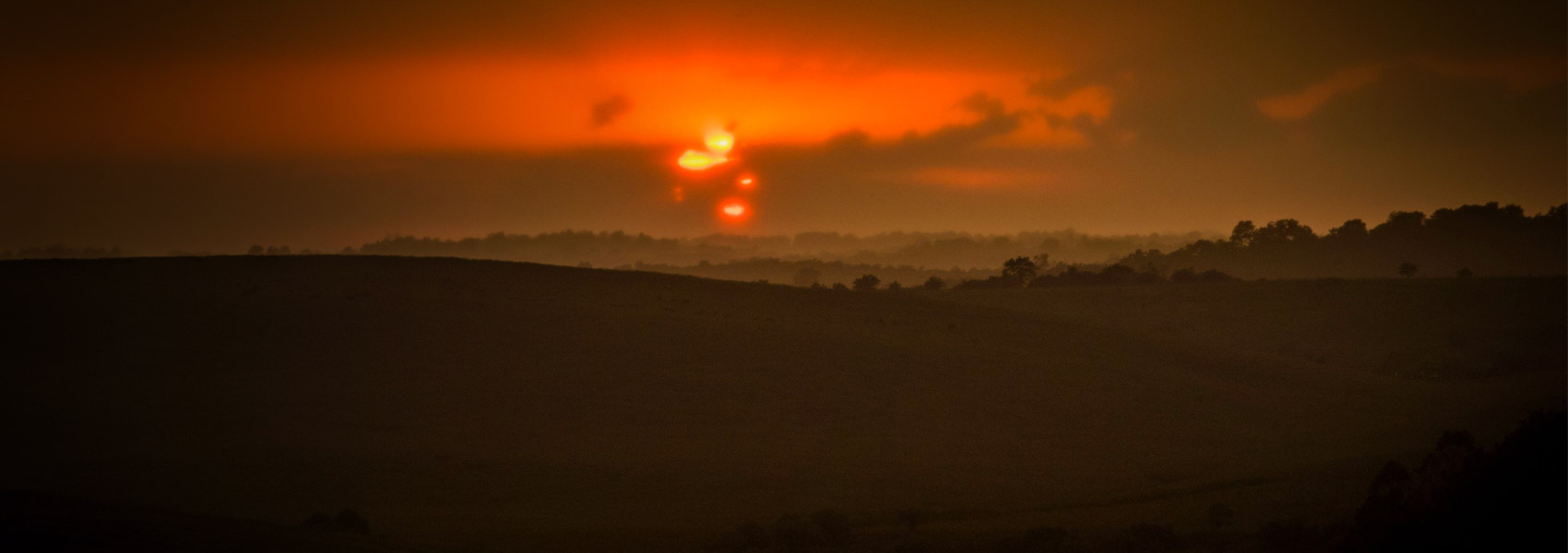

The vast landscape and mining history of The Wilds presents a distinct, ideal setting to study ecological recovery and restoration.
Ongoing biological inventories at the site record over 1,000 species and provide an essential baseline for studying changes in populations over time.
Dig through Ohio’s past—no shovel required. Explore our Restoration Storymap to learn about the history of the land since human colonization and discover how innovations such as mining affected its growth. Click below to catch a close-up view of The Wilds, witness ecological recovery efforts develop over time, and track research conducted right here.
More trees, please. The near 10,000 seedlings planted at The Wilds since 2014 improve the forest ecosystem and provide valuable information about the best techniques to establish trees and reforest reclaimed grasslands. Our research compares the effects of site preparation techniques, planting methods, and different tree species on seedling survival. The Hardwood Forestry Fund (2014-15), Green Forests Works (2016), and the American Association of Zoo Keepers (2018) funded tree planting across the property. You can view the 2018 tree planting on Google Maps here.
Trees struggle to survive on reclaimed mine land due to soil compaction and low nutrient availability. Our answer? Prairies! The Wilds contains nearly 700 acres of prairies, the perfect habitat for pollinators and wildlife. Much of our current research investigates how prairies change soil properties and whether the deep roots of prairie plants prepare the land for the return of forests. Treating our prairies with mowing and prescribed burning helps keep invasive species out, promotes the growth of native species, and returns nutrients back to the soil. Our prairie restoration efforts are supported with funding from the Natural Resource Conservation Service. For more information on The Wilds’ prairies, click here.
Restoration projects starting in 2014 restored roughly 20,000 linear feet of stream and 100 acres of riparian buffer along Miller Creek. The combined effect of removing invasive species, planting native tree species within the buffer, installing riffles, and stabilizing banks enhanced the function and fitness of the waterway. We monitor annually to determine the effects of restoration activity on stream health. Ecological contractor Cardno JFNew supported this effort.
Wetlands boast the most biologically bountiful ecosystems in the world, but they also rank high among the most endangered. To do our part, The Wilds restored 20 acres into a quality wetland refuge responsible for supporting a variety of vegetation, waterfowl, and aquatic wildlife. Present wetland projects at the site aim to remove invasive species such as cattail and increase native wetland vegetation for a more balanced, healthier habitat.
Healthy Forest, Healthy Wildlife
To combat the low species diversity that plagues reclaimed forests at The Wilds, the ecology department is restoring approximately 46 acres through the arduous process of replacing invasive plant species with native ones. The construction of a vernal pool and continued repair of existing wetlands have helped stabilize the area’s native amphibian habitats. Installation of Bradenbark artificial bat roosts have provided much needed roosting habitat for Ohio imperiled bat species. These changes encourage greater biodiversity and empower native plants, animals and insects to thrive. The Arthur L. and Elaine V. Johnson Foundation, Dominion Energy, Columbus Zoo and Aquarium, Holden Arboretum, American Association of Zoo Keepers, and Green Forests Work provided funding and materials for this ongoing project.
ODNR Natives in Reclamation
Past progress propels our research into the future. Our flourishing prairies enable research and development of the reclamation process immediately after mining. The Wilds and the Ohio Department of Natural Resources (ODNR) collaborated to produce ecologically friendly seed mixes that not only revegetate the land like traditional mixes, but also create diverse habitats for wildlife. Research confirms the success of mixes with native grasses and pollinator plants to increase native cover more than traditional mixes.